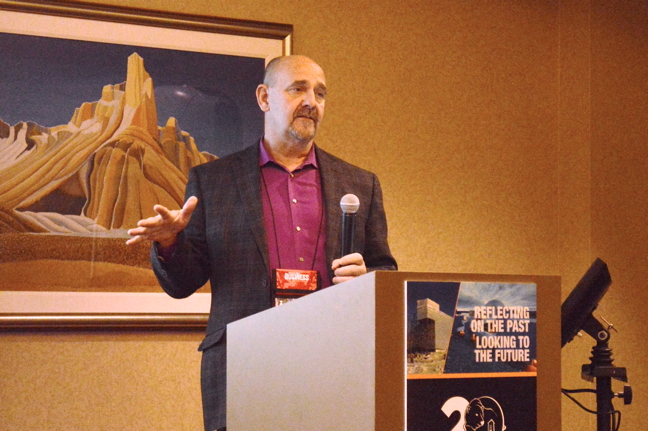Higher speed internet is coming Nunavut

If Nunavut’s slow internet is leaving you a “bit” off—hold on for a while longer, a communications expert said April 5 at Nunavut’s Mining Symposium in Iqaluit.
Major infrastructure projects in coming years promise to change the Arctic into a “bandwidth fertile” region, said Galaxy Broadband President and CEO, Rick Hodgkinson
Galaxy Broadband is a Mississauga-based internet service provider for remote areas, such as mines and offshore oil rigs.
“If you’re in the polar region, guess what? You’re going to be in the most fertile bandwidth area in the world, certainly more so than the equator,” Hodgkinson said during a seminar on future northern infrastructure.
“The quality of life is certainly going to get better.”
The cause of this is two-fold, Hodgkinson said, and starts with market demand.
Trans-continental airline travel over the North Pole and marine shipping are on the rise north of 60.
Airline passengers expect internet service on board, even in the most remote areas, while ships are also increasingly reliant on internet for navigational equipment, he said.
The solution comes by way of higher-bandwidth satellites, pointing directly at the Arctic, that will launch into orbit beginning in 2017.
Between 2017 and 2020, Hodgkinson said gigabits per second, or “Gbps,” available through satellite Internet will grow from the few Gbps on current Arctic satellites to to more than 30 Gbps by 2020.
And that’s not even considering the wild card—a revolutionary scheme from an American company planning to send hundreds of cheaper Internet satellites into low earth orbit, or LEO.
OneWeb, an American startup company with ties to Google, plans to cover the planet with nearly 700 LEO satellites offering even higher bandwidth capacity at 50 Gbps or faster.
The shorter distance to the planet service, in low orbit, will also cut down on the traditionally “laggy” upload rates for satellites in higher orbits.
What that means for northern telecommunications is access to more service options, for less money, as competition and supply will drive prices lower for both ISPs and end users.
“Every one of those low earth orbits goes over the pole,” Hodgkinson said about the OneWeb LEO satellites.
“What that means is affordable bits are coming everywhere.”
Hodgkinson’s presentation follows an announcement by Canadian telecommunications watchdog, the CRTC, which declared in December that all Canadians should have access to high speed broadband internet.
Nunavummiut now suffer internet access that’s graded as some of the worst—and most expensive—in the country.
The CRTC’s new ruling updated its guideline for basic consumer internet speeds to 50 Mbps download and 10 Mbps upload—replacing a previous and antiquated benchmark of five Mbps download and one Mbps upload from 2011.